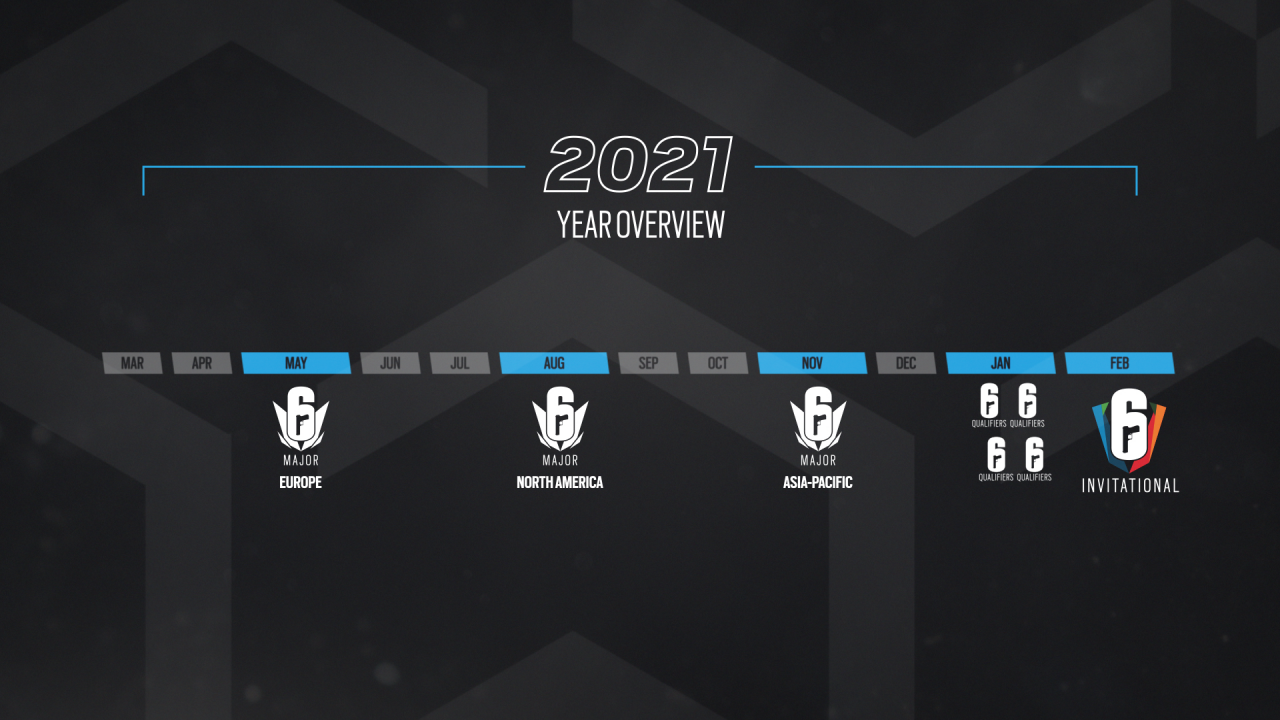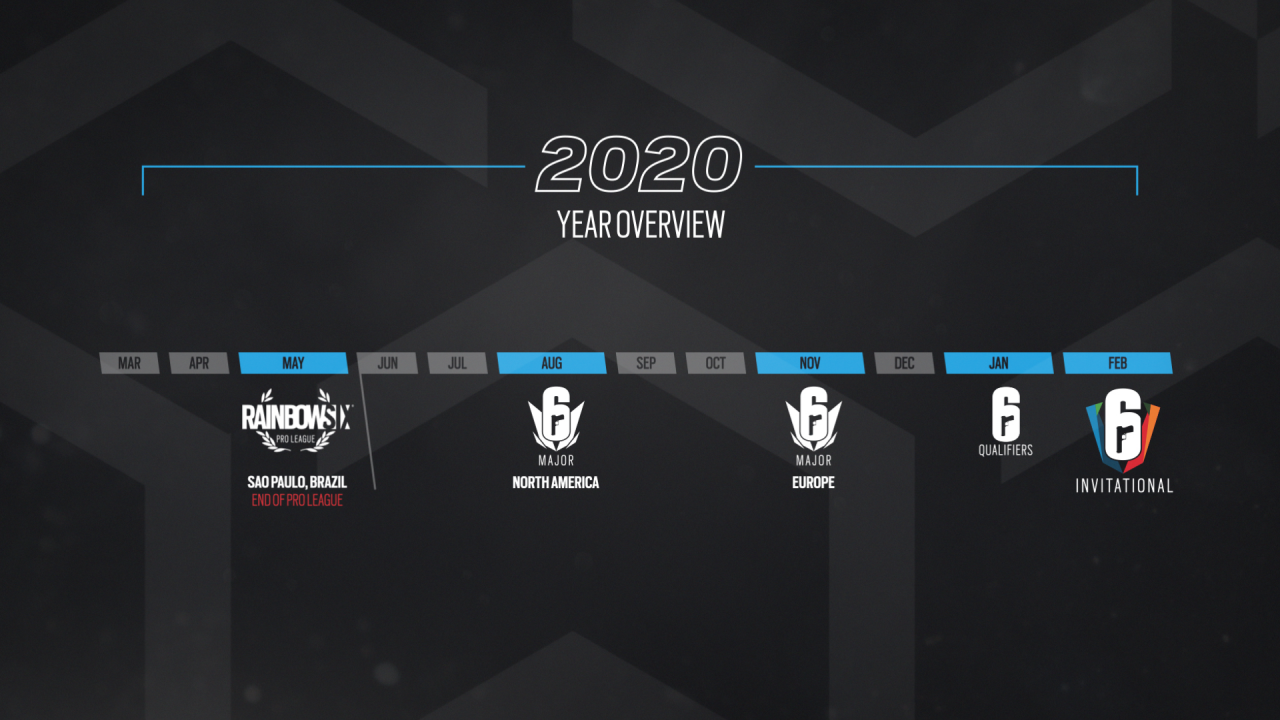At the Six Invitational, held in Montreal, Canada over the weekend, Ubisoft detailed its plans for Phase 3 of its “vision for sustainable esports” for Rainbow Six Siege. Now two years into its Pilot Program, Ubisoft has a wealth of knowledge and experience from Phases 1 and 2. According to Ubisoft, “Phase 3 aims to ensure a mature and virtuous environment for partner organisations engaged in the Rainbow Six professional esports scene and a supportive environment for our teams, players and talent.”
To achieve this, Ubisoft will be;
- Supporting up to 44 organisations worldwide, across NA, EU, LATAM & APAC.
- Running for the next 4 years, allowing organisations to think long term.
- Introducing a multi-tier support system with 3 Tiers, to adapt both revenue shares and requirements to the organisations’ variable situations.
During Phase 3, Ubisoft hopes to redefine what it means to be a professional esports player and what it means to be a professions Rainbow Six Siege team. Phase 3 will push higher industry standards, meaning higher quality teams and a higher quality esports experience.
Rainbow Six Siege Esports
During Phase 3, a set of standards will be put in place. This will require organisations to be of a certain level and “must meet the minimum requirements of having a Rainbow Six Siege roster competing at a professional regional level and participating in a national program.”
With Phase 3 including three tiers of competitors, a third party will be engaged to determine where an organisation sits in the structure.
Organisations selected to enter Phase 3 will then be assessed every 3 months and ranked against other organizations in their Tier on a set of criteria such a viewership, support provided to their players, revenues from their in-game items sales and so on. Organisations can be promoted or demoted from one Tier to another at the end of the year.
During Phase 3, a total of 30% of revenue will be redistributed to Phase 3 organisations.
- League items: for every regional league set sold, 30% of the net revenue will be split 4 ways between Tier 1 organisations, Tier 2, Tier 3 and a Performance Pool.
- Pro Team items: for every team-branded item sold, 30% of the net revenue will be shared with the organisation whose branded item is purchased.
- Six Major items: An Operator bundle will be produced for each Major. 30% of the net revenue from these items will contribute to the prize pool of any Six Major event
- Road to S.I. Battle Pass: 30% of the net revenue from the Road to Six Invitational Battle Pass will go towards the Six Invitational prize pool.
- For revenue generated by the Six Major items and the Road to S.I. Battle Pass contributing to the respective prize pools of those events, if a team wins part of that prize money in the competition, then 70% of this prize money will go to the players and 30% to the organisation.
Regional Competition

In addition to the information provided regarding Phase 3, Ubisoft also revealed that Rainbow Six Siege esports will be shifting to a regionalised format. Following the Six Major talking place at the Grand Auditorium, Anhembi in São Paulo, Brazil on March 16 – 17, the regional shift will occur.
This will see the four existing regions running parallel competitions throughout the year.
A competitive year of Rainbow Six esports, known as a ‘Season’, will be divided into 4 quarters. The first 3 quarters will be known as ‘Stages’, each concluding with a Major, where the 4 best teams from each region at the end of a given stage will gather to compete.
The 4th quarter will be dedicated to regional finals and relegations, leading towards the Six Invitational that will crown the world’s best team at the end of the Season.
The specifics of each region’s competition will be left to the discretion of each region. After four years of competition, Ubisoft sees regionalisation as the next logical step for Rainbow Six Siege esports.
The Asia-Pacific Region will include two divisions; North and South. The North Division will include Japan, Korea and South East Asia while the South will include Oceania and South Asia.
The remaining regions will function as follows;
EUROPE
The European League will expand to ten teams and build upon what was created over the past couple of years. The European national programs will receive greater significance and will feed into the global program, thus forging a multi-tiered esports scene, allowing players from all levels and horizons to compete. FaceIt and LiveNation will be Ubisoft’s co-production partners for the European League and events.
LATIN AMERICA
Latin America will grow from eight to ten teams in Brazil and move to an offline structure in Mexico while expanding into South America (Argentina, Peru, Chile, Uruguay). Latin America will now support three divisions (Brazil, Mexico and South America) with the intent of continuing to evolve into global competitors. The Latin American program will be owned and operated by Ubisoft and its contracted vendors in the region.
NORTH AMERICA
North America will level up the production and tournament operations across the board while continuing to champion players and community. Next year will see the introduction of the US Division, a new program with premier production and play dates. For the first time, Canada will have a place within the global competition stage with the Canada Division.
Finally, at the Six Invitational, the next two Six Majors’ locations were revealed. As mentioned, the 2020 Pro League Finals will take place in Brazil. The August Major will take place in North America and the November Major in Europe.
In 2021 the Six Invitational 2021 will again be held in Canada. The May Major will be in Europe, August in North America and November in Asia-Pacific.
Years 5 and 6

At the Six Invitational, Ubisoft also detailed its plans for Years 5 and Six of Rainbow Six Siege. The elevator pitch is “to implement major game updates that have a direct impact on player experience, including both map and Operator reworks, alongside in-game events for players to always have something new to discover.”
Year 5 will feature a hybrid model. The first two seasons will function the same as they do today, in Year 4; two Operators and a map rework per season. The latter half of Year 5 will shift to the Year 6 format.
In Year 6, each season will introduce one new Operator and plenty of free content available for all players: a map rework, a limited-time event, along with major core gameplay updates. A Battle Pass will also be available each season, starting with Operation Void Edge
A gameplay changed noted by Ubisoft is the introduction of a ‘smart ping’ system to help teams or players who prefer not to use chat. Operators will also have access to more secondary gadgets.
Ubisoft has also announced that Tachanka will be the first Operator to receive a full rework. This will happen in the second half of Year 5.
It’s clear that Ubisoft is dedicated to Rainbow Six Siege esports, to growing the program and ensuring it has a sustainable and long future. For esports fans, this is only a good thing.
Stay tuned for more details on Rainbow Six Siege esports.







